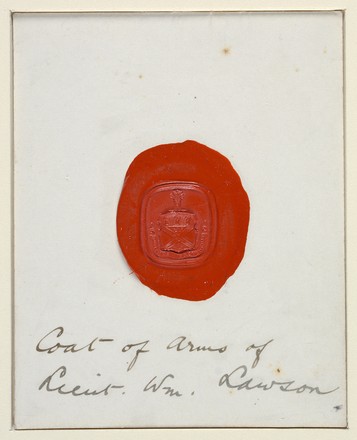
Impression of William Lawson's seal
Safe 1 / 97 Item 2
Sealing wax
Sealing wax
This wax impression of William Lawson’s seal was included in his journal of his expedition across the Blue Mountains. The seal is of Lawson’s coat of arms, which features three sheaves of wheat over a St Andrew's cross and a motto.
The design of William Lawson’s Coat of Arms is emblematic of his personal triumphs. The shape of the escutcheon or shield itself represents achievement; the sheaves of wheat symbolise plentiful harvest, and the St. Andrew’s cross conveys Lawson’s Scottish heritage. The fitting motto Dominus providebit (The Lord will provide) has been interpreted to express Lawson’s agricultural motives.


 Back to list
Back to list